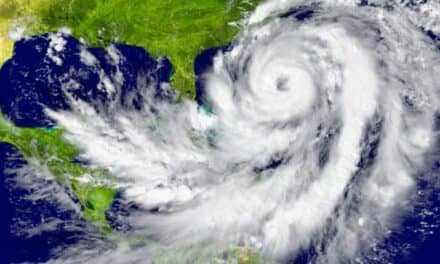Disaster preparedness has always been a critical priority for any healthcare facility. However, recent incidents like the outbreak of ebola and the earthquake in Nepal have underscored the need for organizations to undertake a coherent, comprehensive strategy to deal with unforeseen circumstances before they occur. In the event of an emergency, biomedical departments will play a pivotal role in ensuring continuity of care and maintaining patient safety.
At the AAMI conference in Denver June 5–8, three biomeds will address various facets of disaster preparedness based on experience from their own facilities. In “Disaster Management: HTM Roles and Responsibilities” from 11:15 am to noon Monday, Andrew Moser of the department of Veterans Affairs in Sacramento, Clarice Balconi-Lamica of the VA Greater Los Angeles Healthcare System, and Krista Edwards of the Southern Arizona VA Health Care System will provide insights into how HTM departments can help drive and improve their facilities’ emergency response.
In a mass casualty situation such as Hurricane Katrina, Moser says, the federal government will send in reinforcements within 72 hours. Once those arrive, overwhelmed local hospitals will transport patients to a central triage site; from there, patients will be transported again to a medical evacuation site for removal to other healthcare facilities. During this critical window, it’s essential that the process work as smoothly as possible.
Use of improper equipment can delay patients’ evacuation and therefore treatment. According to Moser, HTM departments outfitting their facilities’ emergency trailers now need to ensure that any hospital equipment which may eventually be used to transport patients in a military aircraft needs to be certified as “safe to fly.” It’s also important that biomeds understand the role of federal agencies during a disaster, so HTM departments “don’t put forth a contingency plan that’s out of their scope and something the federal government disaster teams will already have in place,” he says.
In a serious but less grave emergency such as a fire, flood, or earthquake, HTM departments may need to be prepared for a range of outcomes, including loss of power. Such incidents may not be limited to emergency scenarios, either: The Los Angeles VA has experienced at least two unscheduled power outages due to “spotty utility power,” Balconi-Lamica says. One incident shut down the power in the OR and ICU for 10 to 20 minutes, forcing nurses to hand-crank machines to return blood to the dialysis patients. The incident helped the HTM department realize they needed a better back-up battery management system, and they worked with the hospital’s quality management department to establish one.
In her talk, Balconi-Lamica will focus on how departments can establish an effective continuity of operations plan, or COOP. She says that means addressing several questions, such as “who are the key players, what are the key tools? If the hospital has to pick up and move because of a major earthquake, who are the key people who have to be there to respond and provide services to the hospital?”
Edwards will address a more garden-variety, though no less critical, brand of catastrophe: data loss. Her Tuscon facility suffered a double hard drive failure that led to a significant loss of patient information, for which no backup existed. The organization eventually recovered the information, but the incident revealed a key weakness in its IT infrastructure. According to Edwards, organizations need to spend time identifying single points of weakness in their systems and planning for IT contingencies.
“How can we build robust clinical biomedical engineering programs to ensure continuity of care when equipment fails?” she asks. She wants departments to “go and ask the important questions [about] gaps in our technology. Work with IT departments [to find out] how medical device servers get backed up. Is that an IT role, or an opportunity for HTM departments to step up and create these more robust systems for vulnerability management?”
Hospitals are sometimes plagued by a “diffusion of responsibility,” Moser says. By being proactive and addressing these various challenges before they occur, the copresenters say, biomedical departments can help ensure their facilities are as prepared as possible for the unexpected.





I’m delighted to see that AAMI will dedicate program time at the Annual Conference to address Disaster Preparedness plans. I have just addressed the same topic at the World Congress on Disaster and Emergency Medicine and will do the same next week at World Congress IUPSEM in Toronto, Canada. We need to coordinate resources and collaborate on specific training for HTM professionals on this subject. Congrats on doing that.